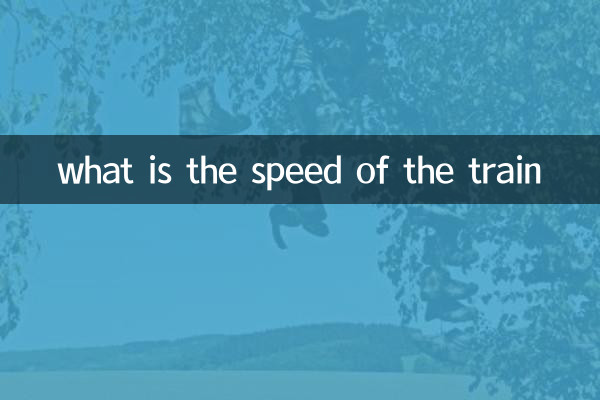what is the speed of the train
As an important means of transportation, the speed of trains has always been the focus of people's attention. With the development of technology, the speed of trains is also increasing. This article will give you a detailed introduction to the speed of trains and related data based on the hot topics and hot content on the Internet in the past 10 days.
1. Speed classification of trains

The speed of trains can be classified according to different types and technologies. The following are common train speed classifications:
| Train type | Speed range (km/h) | Representative models |
|---|---|---|
| Ordinary train | 80-120 | green car |
| express train | 120-160 | T train |
| EMU | 200-250 | Harmony |
| high speed train | 300-350 | Fuxinghao |
| maglev train | 400-600 | Shanghai Maglev |
2. Current status of global high-speed railway development
In recent years, high-speed railways have developed rapidly around the world. The following is a comparison of high-speed railway speeds in some countries:
| country | Maximum operating speed (km/h) | Representative line |
|---|---|---|
| China | 350 | Beijing-Shanghai High-speed Railway |
| Japan | 320 | Tokaido Shinkansen |
| france | 320 | TGV |
| germany | 300 | ICE |
| spain | 310 | AVE |
3. The latest progress of China’s high-speed rail
China's high-speed rail has developed rapidly in recent years. Here are some of the latest hot topics:
1.Fuxing smart EMU: China’s latest developed Fuxing smart EMU has a maximum operating speed of 350 kilometers/hour and is equipped with autonomous driving capabilities.
2.Beijing-Xiongan Intercity Railway: The Beijing-Xiong intercity railway connecting Beijing and Xiongan New Area has been put into operation, with a design speed of 350 kilometers per hour.
3.Chengdu-Chongqing Middle Line High-speed Railway: The Chengdu-Chongqing Middle Line High-speed Railway under construction will achieve a one-hour direct connection from Chengdu to Chongqing, with a design speed of 400 kilometers per hour.
4. Factors affecting train speed
The speed of a train is affected by many factors, including:
1.track conditions: High-speed railway requires ballastless track and smooth line design.
2.vehicle technology: Advanced powertrain and lightweight design increase speed.
3.signaling system: A reliable signaling system is the key to ensuring the safety of high-speed operation.
4.environmental factors: Weather, terrain, etc. will also affect the actual running speed of the train.
5. Development trend of train speed in the future
As technology continues to advance, the speed of future trains will continue to increase:
1.Ultra-high speed magnetic levitation: China is developing a high-speed maglev train with a speed of 600 kilometers per hour.
2.vacuum tube train: In theory, a hyper-high-speed rail with a speed of more than 1,000 kilometers per hour can be achieved.
3.Intelligent technology: Artificial intelligence and big data will further improve the operating efficiency and safety performance of trains.
Conclusion
The speed of trains is an important indicator to measure the development level of rail transportation in a country. From the original steam locomotive to today's high-speed EMUs, the increase in train speed has not only changed people's travel methods, but also promoted economic and social development. In the future, with the application of new technologies, the speed of trains will continue to set new records.

check the details

check the details